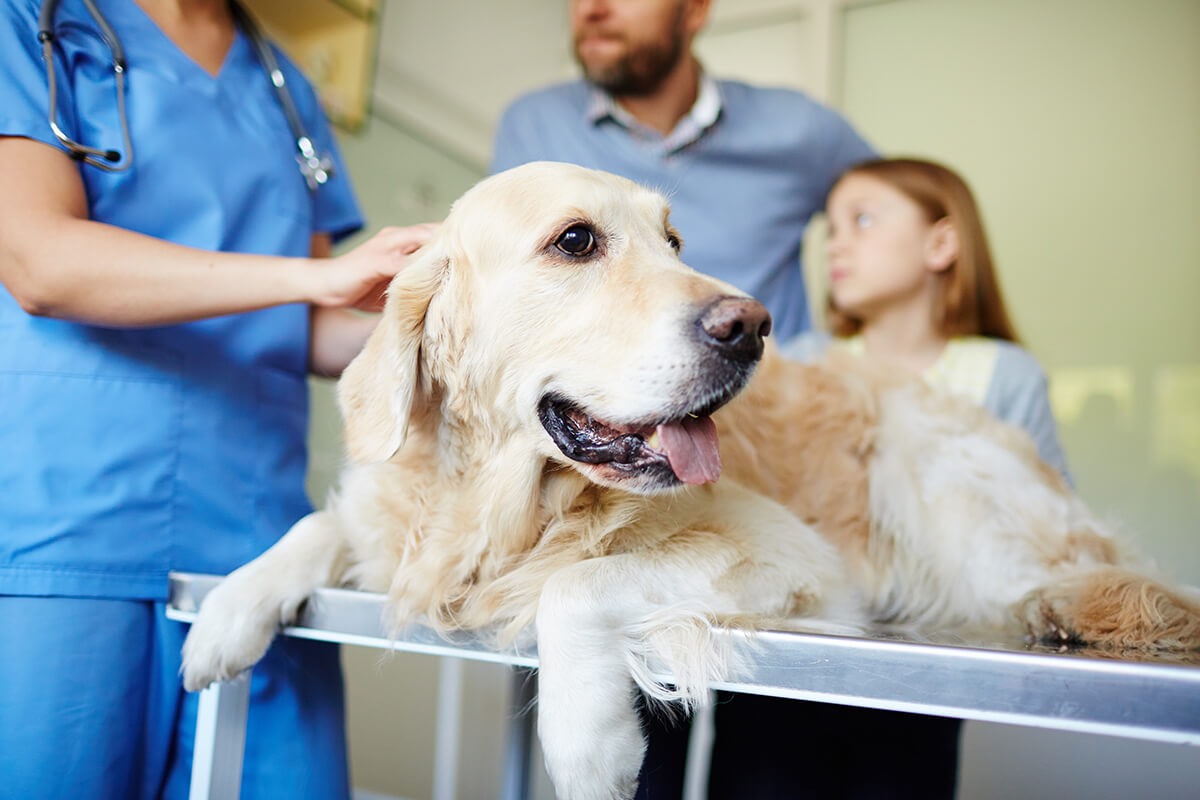3:18 pm

The cranial cruciate ligament (CCL) provides important stabilization in the knee, and a CCL tear or rupture is the most common cause of hind-limb lameness and pain in dogs. Dogs with CCL injuries will eventually develop arthritis in the affected knee, but proper stabilization can minimize joint pain and inflammation. In most cases, surgery is the best way to effectively stabilize the joint and allow your four-legged friend to return to their previous activity level. Keep reading to learn surgical options for treating CCL injuries and ways to facilitate healing post-surgery.
Created in the 1980s, tibial plateau leveling osteotomy (TPLO) was a major advancement for veterinarians treating CCL injuries. The technique involves changing the angle and interaction between the femur (i.e., thigh bone) and tibia (i.e., shin bone) to reduce the tibia’s ability to shift forward in relation to the femur.
To perform a TPLO, the surgeon first takes an X-ray of the dog’s knee to measure the tibial plateau angle, because the goal is to reduce this angle to eliminate joint instability during movement. This is accomplished by cutting in a semicircle around the top of the tibia, rotating the bone until the desired angle is reached, and using bone plates to stabilize the new conformation. Once the bone heals, the bone plates are no longer needed, but they are not typically removed unless problems, such as implant failure or infection, occur. TPLO can be performed in dogs of all sizes but is most beneficial for active dogs who weigh over 45 pounds.
About half the dogs begin walking on the affected limb in 24 hours after surgery, and most dogs can bear moderate to full weight on the limb in two weeks. Four months after the procedure, most dogs can walk and play normally, and the majority return to full physical activity in six months.
Tibial tuberosity advancement (TTA) is a procedure that stabilizes the knee in the CCL’s absence. The procedure involves a linear, vertical cut along the tibial tuberosity, which is situated at the front of the tibia. The surgeon moves this section forward, inserts a special orthopedic spacer, and then uses a bone plate to hold the tibia sections in proper position. A TTA changes the alignment of the patellar ligament, improving joint stability. This procedure is recommended for dogs of all sizes but like the TPLO is recommended for larger patients. Recovery is similar to that of a TPLO, with most dogs returning to full physical activity in six months.
This technique uses suture material and securing implants to mimic the ruptured CCL’s function. The suture will eventually stretch or break, but the long-term goal is to encourage scar tissue formation around the joint to help provide stability. Lateral fabellar suture stabilization is typically reserved for small-breed inactive dogs, because in large, active canines, the suture tends to fail, and arthritis progresses quickly. About 85% of dogs who undergo this procedure regain complete or near-complete function. Strict activity restriction is necessary for the first 8 to 12 weeks, and then the dog can gradually return to normal activity.
Regardless of the type of surgery used to treat your pet’s CCL injury, physical rehabilitation can significantly facilitate their recovery. Research has demonstrated that physical rehabilitation can accelerate healing and help dogs return to optimal function post-surgery. Benefits for surgical patients include improved joint range of motion, increased muscle strength, decreased swelling and pain, faster functional recovery, and weight management.
Your dog’s rehabilitation program may include:
If your dog has a CCL injury, contact our AERA team to schedule an appointment, so we can determine what procedure will help your canine friend get back on all four feet as soon as possible.